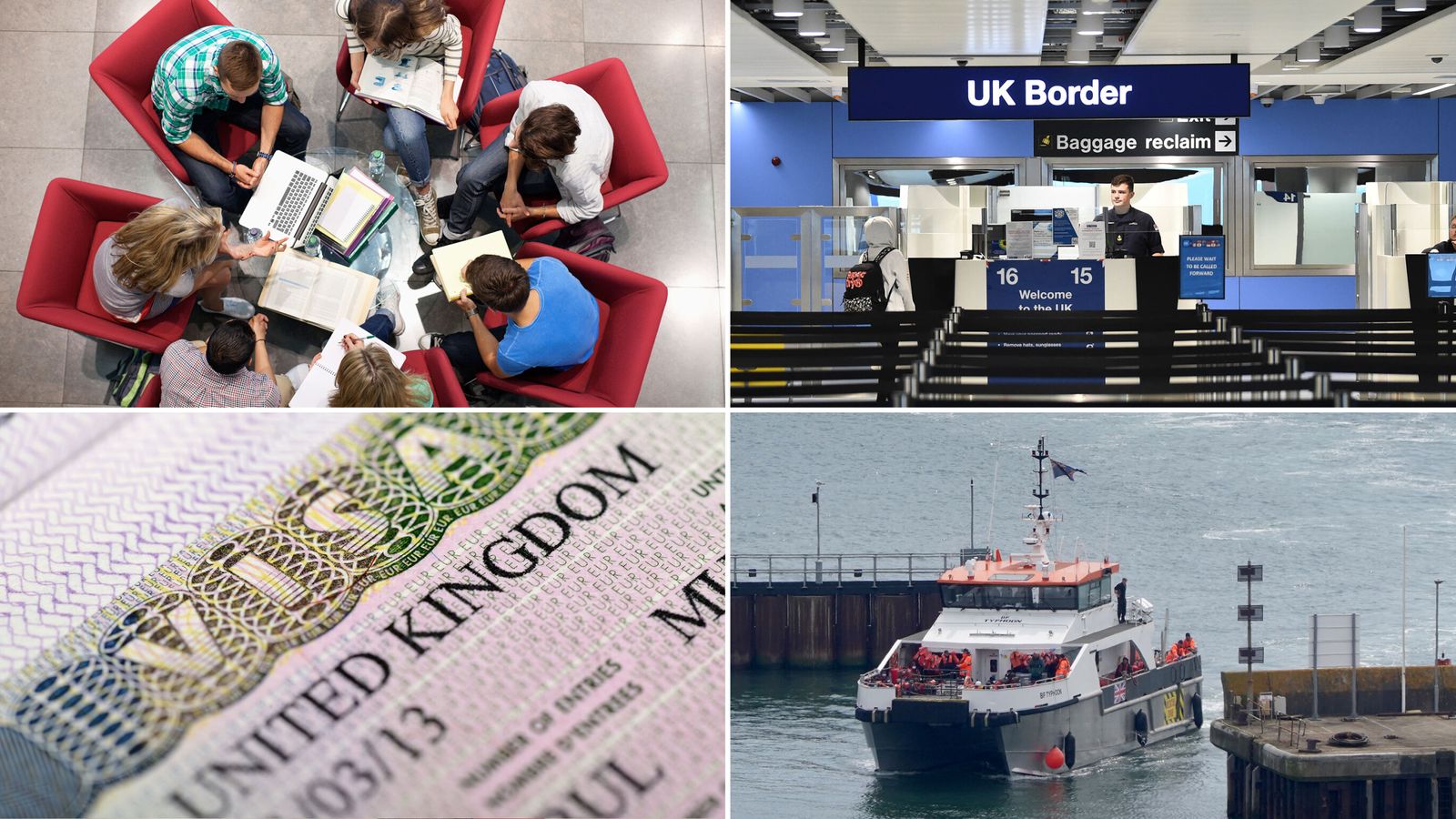Net migration rose to 606,000 in the year to December 2022, official statistics show.
The figure overtakes the previous post-war high of 504,000 in the year to June last year – and comes despite a Tory 2019 manifesto commitment to “bring overall numbers down”.
Net migration is the annual number of people arriving in the UK when both immigration and emigration are taken into account.
The figures, published by the Office for National Statistics (ONS) this morning, show that total long-term immigration was estimated at around 1.2 million in 2022, while emigration was 557,000.
Most people arriving to the UK last year were non-EU nationals (925,000), followed by EU (151,000) and British (88,000), the ONS said.
However, the ONS said that despite the rise in immigration last year, its long-term international migration estimates “suggest a slowing in growth over the most recent quarters”.
“This may reflect the temporary nature of these world events, as well as beginning to see higher numbers of international students emigrate. We will continue to monitor these patterns in the coming months.”
GPs will have to give patients options to travel further or go private to tackle NHS backlog
With net migration set to hit a record high – the government faces questions over whether their rhetoric matches their actions
Sir Keir Starmer accuses Rishi Sunak of ‘breaking promises’ on migration
The body said it was a “unique year” for migration due to “world events” including the war in Ukraine and unrest in Hong Kong.
It said that while it did not know whether arrivals from Ukraine and Hong Kong would stay in the UK long term – defined as 12 months – it estimated that there were 114,000 long-term arrivals from Ukraine last year, while 52,000 people came from Hong Kong on the British National (Overseas) visa.
Jay Lindop, the director of the centre for international migration at the ONS, said numbers arriving on humanitarian routes increased over the 12-month period.
“The main drivers of the increase were people coming to the UK from non-EU countries for work, study and for humanitarian purposes, including those arriving from Ukraine and Hong Kong,” she said.
“For the first time since using our new methods to measure migration, we have also included asylum seekers in our estimates, with around 1 in 12 non-EU migrants coming via this route.
“There are some signs that the underlying drivers behind these high levels of migration are changing. As lockdown restrictions were lifted in 2021, we saw a sharp increase in students arriving.
“Recent data suggests that those arriving in 2021 are now leaving the country, with the overall share of non-EU immigration for students falling in 2022.
“In contrast, those arriving on humanitarian routes increased over the 12 months. Evidence also suggests immigration has slowed in recent months, potentially demonstrating the temporary nature of these events.”
Read more:
Immigration: Ask The Experts – submit your question now for live Q&A
The fresh statistics are likely to draw the ire of Tory backbenches who want to see immigration reduced.
Prime Minister Rishi Sunak is under pressure after he appeared to back away from a commitment made under his predecessor, Boris Johnson, that net migration would fall below 250,000.
Last week he vowed to bring the level of net migration down to below the 500,000 figure he “inherited” upon taking office but would not put a number on the figure he would like to see.
Suella Braverman, the home secretary, has said Britain is at risk of “forgetting how to do things for ourselves” due to a reliance on foreign workers.
On Tuesday, Ms Braverman announced new curbs on international students bringing family members to the UK in a bid to lower the numbers.
But Labour says the reason the government has had to issue so many visas is because of “labour and skills shortages”.
Earlier this week, separate figures seen by Sky News showed a growing number of skilled workers from Africa and Asia are moving to Britain to plug staff shortages, with businesses making use of the new post-Brexit migration system to bring in IT professionals, nurses and accountants.








